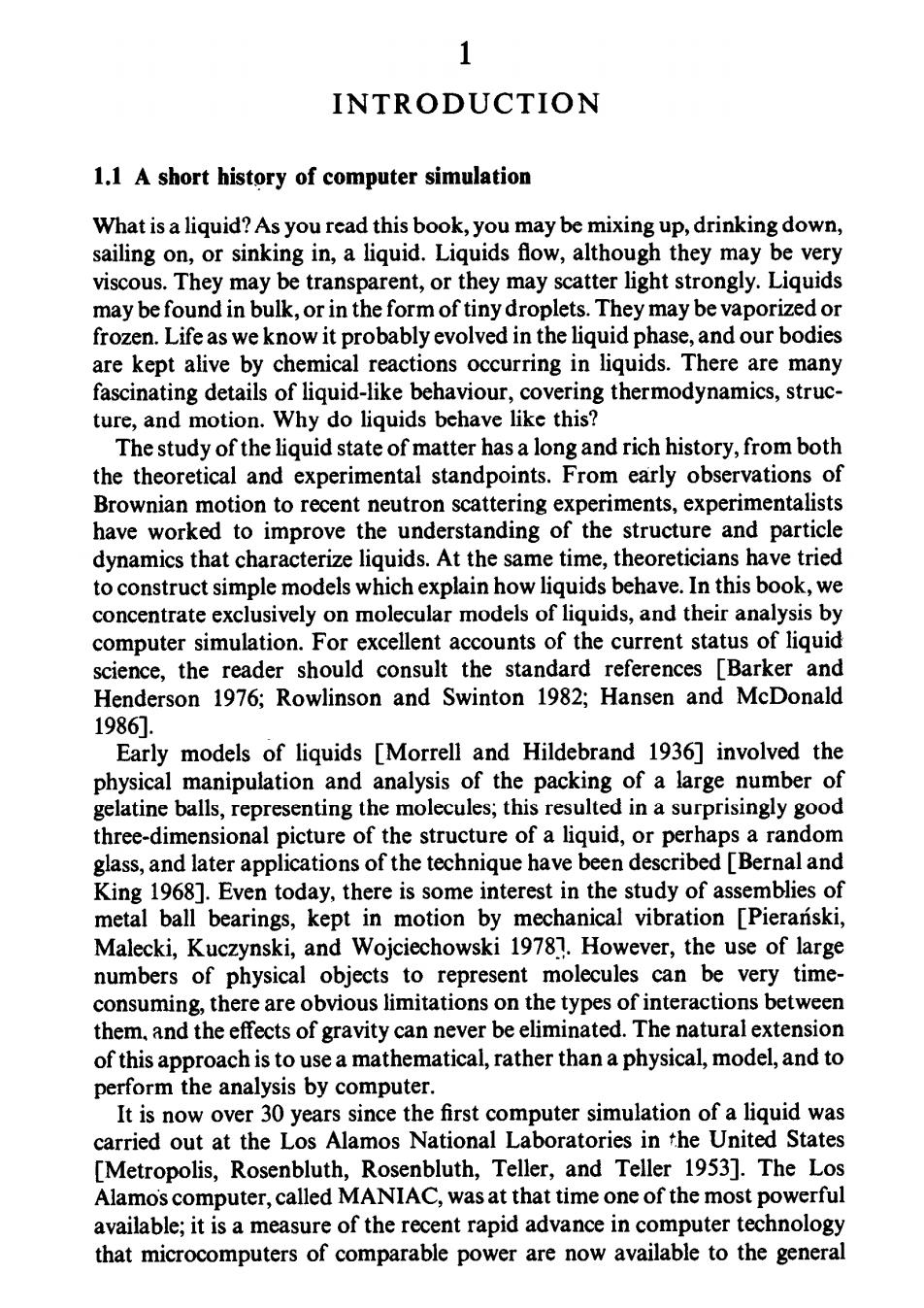正在加载图片...

1 INTRODUCTION 1.1 A short history of computer simulation What is a liquid?As you read this book,you may be mixing up,drinking down, sailing on,or sinking in,a liquid.Liquids flow,although they may be very viscous.They may be transparent,or they may scatter light strongly.Liquids may be found in bulk,or in the form of tiny droplets.They may be vaporized or frozen.Life as we know it probably evolved in the liquid phase,and our bodies are kept alive by chemical reactions occurring in liquids.There are many fascinating details of liquid-like behaviour,covering thermodynamics,struc- ture,and motion.Why do liquids behave like this? The study of the liquid state of matter has a long and rich history,from both the theoretical and experimental standpoints.From early observations of Brownian motion to recent neutron scattering experiments,experimentalists have worked to improve the understanding of the structure and particle dynamics that characterize liquids.At the same time,theoreticians have tried to construct simple models which explain how liquids behave.In this book,we concentrate exclusively on molecular models of liquids,and their analysis by computer simulation.For excellent accounts of the current status of liquid science,the reader should consult the standard references [Barker and Henderson 1976;Rowlinson and Swinton 1982;Hansen and McDonald 1986. Early models of liquids [Morrell and Hildebrand 1936]involved the physical manipulation and analysis of the packing of a large number of gelatine balls,representing the molecules;this resulted in a surprisingly good three-dimensional picture of the structure of a liquid,or perhaps a random glass,and later applications of the technique have been described [Bernal and King 1968].Even today,there is some interest in the study of assemblies of metal ball bearings,kept in motion by mechanical vibration [Pieranski, Malecki,Kuczynski,and Wojciechowski 19787.However,the use of large numbers of physical objects to represent molecules can be very time- consuming,there are obvious limitations on the types of interactions between them,and the effects of gravity can never be eliminated.The natural extension of this approach is to use a mathematical,rather than a physical,model,and to perform the analysis by computer. It is now over 30 years since the first computer simulation of a liquid was carried out at the Los Alamos National Laboratories in the United States [Metropolis,Rosenbluth,Rosenbluth,Teller,and Teller 1953].The Los Alamos computer,called MANIAC,was at that time one of the most powerful available;it is a measure of the recent rapid advance in computer technology that microcomputers of comparable power are now available to the general